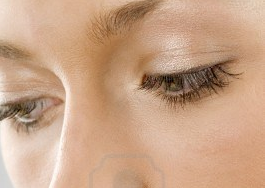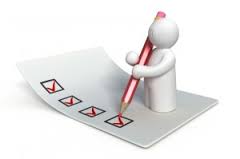
| Learning Style | Traits |
| Auditory Learning | · Remember what they hear and their own verbal expressions. |
| “I Hear” | · Remember by talking aloud and through verbal repetition. |
| · Desire to talk through concept not understood. | |
| · Verbally express excitement about learning. | |
| Learn best through hearing, using their ears and their voices. | · Can remember verbal instructions without recording them. |
| · Enjoy discussions and talking with others, lectures, seminars. | |
| · Are easily distracted by sound, also find silence distracting. | |
| · Enjoy interesting lessons and explaining subjects to others. | |
| · Find it difficult to work quietly for long periods of time. | |
| · Enjoy activity through music. | |
| · Desire to see words written down/ mind mapping | |
| Visual Learning | · Enjoy a picture of something described. |
| “ I See “ | · Prefer a time line to remember historical events. |
| · Prefer written instructions for assignments. | |
| · Reading. | |
| Visual Learners learn best through seeing, using their eyes. | · Carefully organise their learning materials. |
| · Enjoy decorating learning areas and making visual links. | |
| · Desire photography and illustrations with text. | |
| · Remember and understand through use of pictures, charts. | |
| · Like presentations with slides. | |
| · Study by reading over notes and organising. | |
| · Like visual art activities. | |
| Kinaesthetic Learning | · Become physically involved with the subject being studied. |
| “ I Do “ | · Enjoy acting out a situation of a subject being studied. |
| · Enjoy making a product or completing a project. | |
| · Prefer building and physically handling materials. | |
| Kinaesthetic learner’s best learn through touch, using their hands | · Remember and understand through doing something. |
| · Take study notes to keep busy but often do not need them. | |
| · Enjoy using computers, Internet and Virtual learning | |
| · Physically express enthusiasm by getting active and excited. | |
| · Find it difficult to sit still for prolonged periods of time. | |
| · Enjoy all hands on activities. |
Try to use elements from within all three learning styles to support your Learner’s learning. Multi- sensory learning is most effective.
Learning Styles
|
When you |
Visual | Auditory |
Kinesthetic |
| Spell | You try to see the word. | You sound out the word or use a phonetic approach | You write the word down to find if it feels right. |
| Talk | You dislike listening for long. You favour words such as see, picture and image. | You enjoy listening but are impatient to talk. You use words such as hear, tune and think. | You gesture and use expressive movements. You use words such as feel, touch and hold |
| Concentrate | You become distracted by untidiness or movement |
You become distracted by sounds or noises. |
You become distracted by activity around you. |
| Meet someone again | You forget names but remember faces or remember where you met | You forget faces but remember names or remember what you talked about. |
You remember best what you did together. |
| Contact people on business | You prefer face to face, personal meetings. | You prefer the telephone. | You talk with them while walking or participating in an activity. |
| Read | You like the descriptive scenes or pause to imagine the action. | You enjoy dialog and conversation or hear the characters talk. | You prefer action stories or are not as keen reader. |
| Do something new at work | You like to see demonstrations, diagrams, slides or posters. | You prefer verbal instructions or talking about it with someone else. | You prefer to jump right in and try it. |
| Put something together | You look at the directions and the pictures | You ignore the directions and figure it out as you go along. | |
| Need help with a computer application | You seek out pictures or diagrams. | You call the helpdesk, ask a neighbour or growl at the computer. | You keep trying to do it on another computer. |
This chart helps you to identify with certain traits of your learning style. Read the word in the left column and look at the statements made under each learning style. Your style may fall into all three columns, but you will likely identify with one column overall. This document column indicates your primary learning.
Normally, we each have five senses. There is an increasing realisation that we respond subconsciously to our sense of smell. Aromatherapy is based on the principle that aromas can help to create mood. More simply, manufacturers of household products usually try to make them “smell nice”. More subtly, perfumers make a living from concocting alluring and enticing odours. Recent research has shown that men and women produce pheromones (body odours) that enhance their attractiveness to the opposite sex in myriad subtle ways.
Similarly our sense of taste is very important to us and is one of the first to be developed in the young. It is one of the reasons why babies put everything in their mouths (although they also use their mouths as a kinaesthetic sensory organ). Nevertheless, we do not normally associate our senses of smell and taste as being useful for communication purposes leaving us with three methods (or modes) of receiving and processing information.



Visual Auditory Kinaesthetic
This is often referred to as the VAK mode.
Each of us has a natural preference for the way in which we prefer to receive, process animpart in formation. This is largely genetically determined but is also susceptible to development, particularly when we are young (whilst our neural pathways are still being established). There are various ways in which preferred processing modes become apparent and some simple ways in which we can enhance the effectiveness of our communication once we are aware of them. One way to detect a person’s preferred processing mode is to watch their eye movements, particularly when they are thinking or answering a question.
 Visual thinkers tend to look upwards
Visual thinkers tend to look upwards
 Auditory thinkers tend to look straight ahead
Auditory thinkers tend to look straight ahead
 Kinaesthetic thinkers tend to look downwards
Kinaesthetic thinkers tend to look downwards
Click on the Icon below to take the questionnaire
